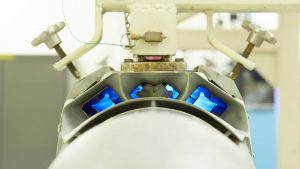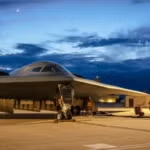
Northrop Grumman's [NOC] ALQ-131C electronic warfare (EW) suite for the Air Force F-16 fighter by Lockheed Martin [LMT] has proven out in testing with the F-16's new AN/APG-83 Scalable Agile Beam Radar (SABR) by Northrop Grumman, the latter company said. Such Active Electronically Scanned Array (AESA) radars include beyond line of sight, longer range air-to-air and air-to-ground targeting of multiple targets, such as air defense radars, cruise missiles, and surface to air missiles, and all-weather, high-resolution, synthetic aperture radar (SAR)…














